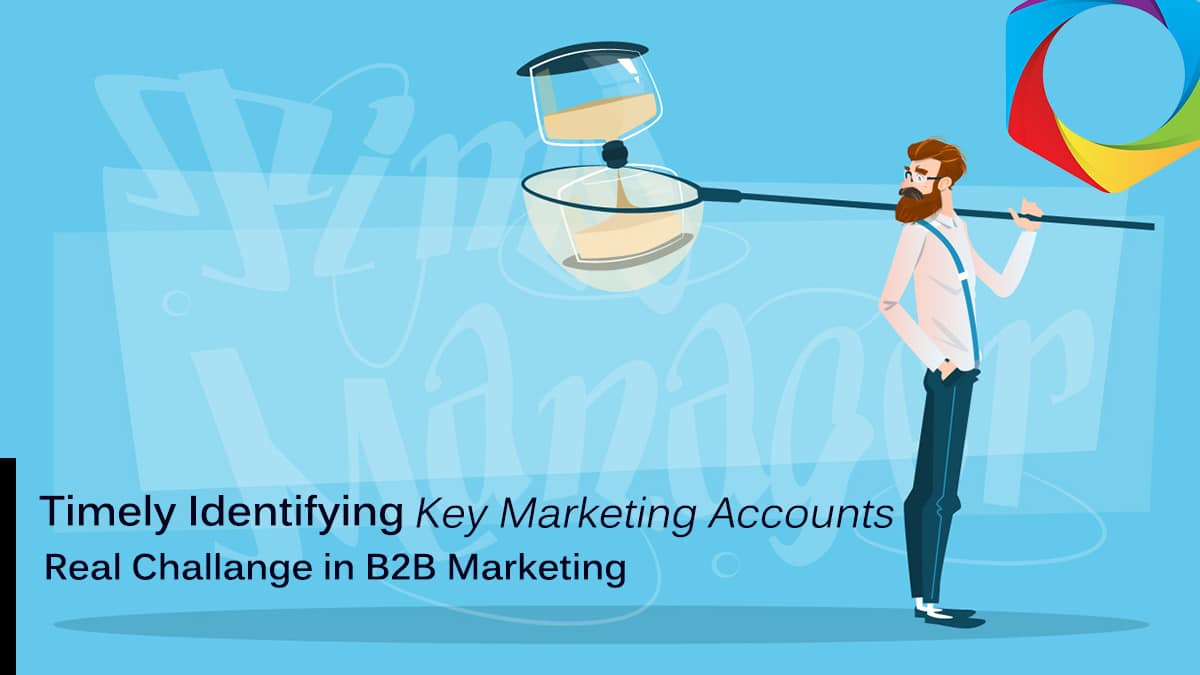In the competitive landscape of B2B marketing, one of the most critical tasks is identifying key marketing accounts in a timely manner. This challenge is multifaceted, involving data analysis, market understanding, and strategic decision-making. In this blog, we will explore why timely identification of key marketing accounts is crucial, the challenges involved, and strategies to overcome these challenges.
Why Timely Identification is Crucial
- Maximizing Revenue Potential:
- Key accounts often represent a significant portion of a company’s revenue. Identifying them early allows businesses to allocate resources effectively and nurture these accounts, leading to increased sales and customer loyalty.
- Gaining Competitive Advantage:
- Early identification of key accounts allows businesses to engage with potential clients before competitors, building stronger relationships and increasing the likelihood of securing long-term contracts.
- Optimizing Marketing Efforts:
- By focusing on key accounts, marketing efforts can be more targeted and personalized, resulting in higher conversion rates and better ROI on marketing campaigns.
Challenges in Identifying Key Marketing Accounts
- Data Overload:
- B2B marketers often face an overwhelming amount of data from various sources, making it difficult to filter and identify the most relevant information for account identification.
- Complex Buyer Journeys:
- In B2B markets, the buying process is typically longer and involves multiple stakeholders, adding complexity to identifying and targeting the right accounts at the right time.
- Dynamic Market Conditions:
- Market conditions and customer needs can change rapidly, requiring businesses to continuously monitor and adapt their account identification strategies.
- Integration of Data Sources:
- Combining data from different platforms (CRM, social media, website analytics, etc.) into a cohesive strategy can be challenging, often leading to siloed information and missed opportunities.
Strategies to Overcome the Challenges
- Implementing Advanced Analytics:
- Leveraging advanced analytics and AI can help in processing large volumes of data, identifying patterns, and predicting which accounts are likely to become key customers.
- Utilizing Account-Based Marketing (ABM):
- ABM focuses on treating individual accounts as markets in their own right, allowing for more personalized and effective marketing strategies. This approach helps in identifying and nurturing key accounts more effectively.
- Enhancing Data Integration:
- Ensuring that all data sources are integrated and accessible through a centralized system can provide a comprehensive view of potential key accounts, aiding in timely identification and decision-making.
- Continuous Monitoring and Adaptation:
- Regularly reviewing and updating account identification criteria based on market trends and customer feedback ensures that businesses remain agile and responsive to changing conditions.
- Collaborating Across Departments:
- Encouraging collaboration between sales, marketing, and customer service teams can lead to better insights and a more holistic approach to identifying and nurturing key accounts.
Conclusion
Timely identifying key marketing accounts is a significant challenge in B2B marketing, but it is also a critical component for success. By leveraging advanced analytics, adopting ABM strategies, enhancing data integration, and fostering inter-departmental collaboration, businesses can overcome these challenges and gain a competitive edge. The ability to identify and nurture key accounts effectively not only maximizes revenue potential but also strengthens customer relationships and drives long-term growth.
As B2B marketers increasingly struggle to reach and resonate with the right audiences in a sea of competitive noise, B2B intent data – data that identifies exactly when someone is in-market, or considering a particular solution – provides an accurate effective solution.
In short, B2B buyer intent data allows you to identify exactly if and when a B2B prospect is actively considering, or looking to purchase your product or solution, enabling informed, timely campaign decisions.
Looking in more detail, intent data is information collected about a company’s digital activity, to provide insight into their purchase intent and online research behavior. Using insight from a range of 3rd party data sources, over time and mapped to the buyer’s journey, this insight allows sales and marketing teams to build a clear view of a target’s challenges and buying motives, topic searches, intent velocity (how active they are around that topic), and other account intelligence.

